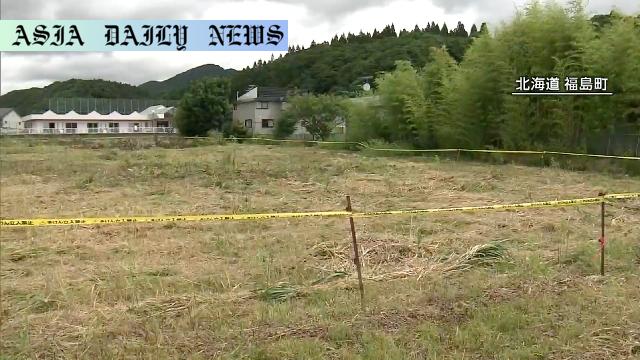Bear Attack: Officials in Hokkaido confirm DNA of a bear killed last week matches that of a fatal attack on a woman four years ago.
- DNA analysis identified a bear responsible for two fatal attacks in Hokkaido.
- The bear attacked a 52-year-old man last week and a woman four years ago.
- Authorities urge residents to remain vigilant despite lifting an alert.
- The incident highlights the dangers of bear encounters and conservation challenges.

Shocking Revelation: DNA Links Deadly Bear to Two Fatal Attacks in 4 Years
Introduction: DNA Analysis and Its Findings
The recent discovery in Hokkaido has shaken the community and the region. Authorities in the northern prefecture of Japan revealed that a male brown bear responsible for the fatal attack on a newspaper delivery man on July 12 was also linked to an incident four years ago. The startling connection was made after a thorough DNA analysis conducted by a local research institute. This analysis showed that the DNA sample collected from the bear’s fur matched samples taken from the clothes of the victim and nearby traces at the scene. Most notably, the DNA also matched a previous case from four years ago in which an elderly woman in her 70s was killed by a bear.
Recent Tragedy in Fukushima, Southern Hokkaido
The recent bear encounter shocked the small town of Fukushima in southern Hokkaido. The 52-year-old newspaper delivery man who was mauled to death while on his delivery route became the latest victim of an ongoing situation involving human conflict with wildlife. Authorities acted quickly after receiving reports of the attack. On Friday, the bear believed to be responsible for the attack was tracked down and neutralized by local officials. The revelation that this very same bear was involved in a prior fatal mauling has reignited discussions on wildlife management and human safety.
The Four-Year Connection: Linking the Past and Present
The findings from the detailed genetic analysis have brought to light an extraordinary case of wildlife-related danger in Japan. The previous case happened four years ago when a woman in her 70s was killed by a bear while in her village. DNA extracted from fur samples at that time remained archived in the research institute’s database. The tragic link between these two incidents underscores a troubling reality—some individual wild animals retain aggressive tendencies towards humans, highlighting a potential pattern that conservationists and authorities must monitor to avoid future losses.
Impact on Wildlife and Conservation Policy
The local government of Hokkaido has lifted the alert issued in the town of Fukushima after the bear was killed. However, residents are still urged to remain vigilant. The incident underscores a delicate balance between conservation efforts to protect dwindling wildlife populations and ensuring the safety of human communities in bear-inhabited regions. Japan, like many countries, faces increasing interactions between humans and wildlife due to urban expansion and habitat encroachment. This case further highlights the necessity of both preventive measures, such as education on bear behavior, and reactive responses, such as regular culling or remote relocation when bear presence becomes problematic.
Lessons Learned and Preparedness for Future Incidents
Developing effective mitigation strategies is essential not only for establishing safety measures but for fostering a better understanding of coexistence with wildlife. Community education campaigns that teach residents how to handle potential bear encounters and awareness of seasonal bear activity can make a significant difference. Further advancements in wildlife tracking and research can prevent such incidents before they escalate. Authorities are encouraged to regularly inspect and update their wildlife management protocols to prevent further tragedies.
Conclusion
The tragic events in Hokkaido serve as a sobering reminder of the formidable challenges humanity faces in coexisting with nature. While tragic, the use of DNA analysis in this case showcases the power of technology to uncover truths and inform better decision-making. As the prefectural government moves forward, the hope is that lessons learned from this incident will lead to more proactive policies ensuring the safety of people while preserving Japan’s rich biodiversity.



Commentary
The Dangerous Intersection of Wildlife and Human Habitat
Japan is home to an incredibly diverse range of wildlife, and nowhere is that more visible than in Hokkaido, where brown bears are a powerful symbol of the natural world. However, this recent incident in Fukushima reminds us of the inherent dangers involved in human interaction with wildlife. The tragic death of a 52-year-old man last week and the revelation that the responsible bear killed another person four years ago underscore the urgent need to address the recurring risks posed by such encounters.
Addressing the Bear-Human Conflict
While the loss of life is heartbreaking, it also indicates a larger issue at hand—how humans adapt to living in close proximity to bears. Bears, often drawn to human settlements in search of food, are not to blame for their actions. Rather, the increasing encroachment of human development on their habitats has disrupted the natural balance, leading to instances such as these. Wildlife corridors and conservation zones can assist in keeping bears within their natural territory while limiting dangerous interactions.
The Role of DNA Technology
The use of DNA analysis in this case is a testament to how far technology has come in aiding our understanding of wildlife patterns. Beyond identifying culprits in human-wildlife conflict, DNA research can be instrumental in studying bear populations, their movements, and their behavioral changes over time. Such data can arm policymakers and conservation groups with the tools they need to make more informed and balanced interventions.
Finding the Balance
These incidents call for a collaborative effort between the local government, conservationists, and residents to devise preventive strategies and ensure mutual safety. From better waste management policies, which reduce attractants for bears, to community awareness campaigns, actionable steps are needed to prevent history from repeating itself. Ultimately, the goal is to foster greater coexistence between humans and wildlife while safeguarding lives on both sides.